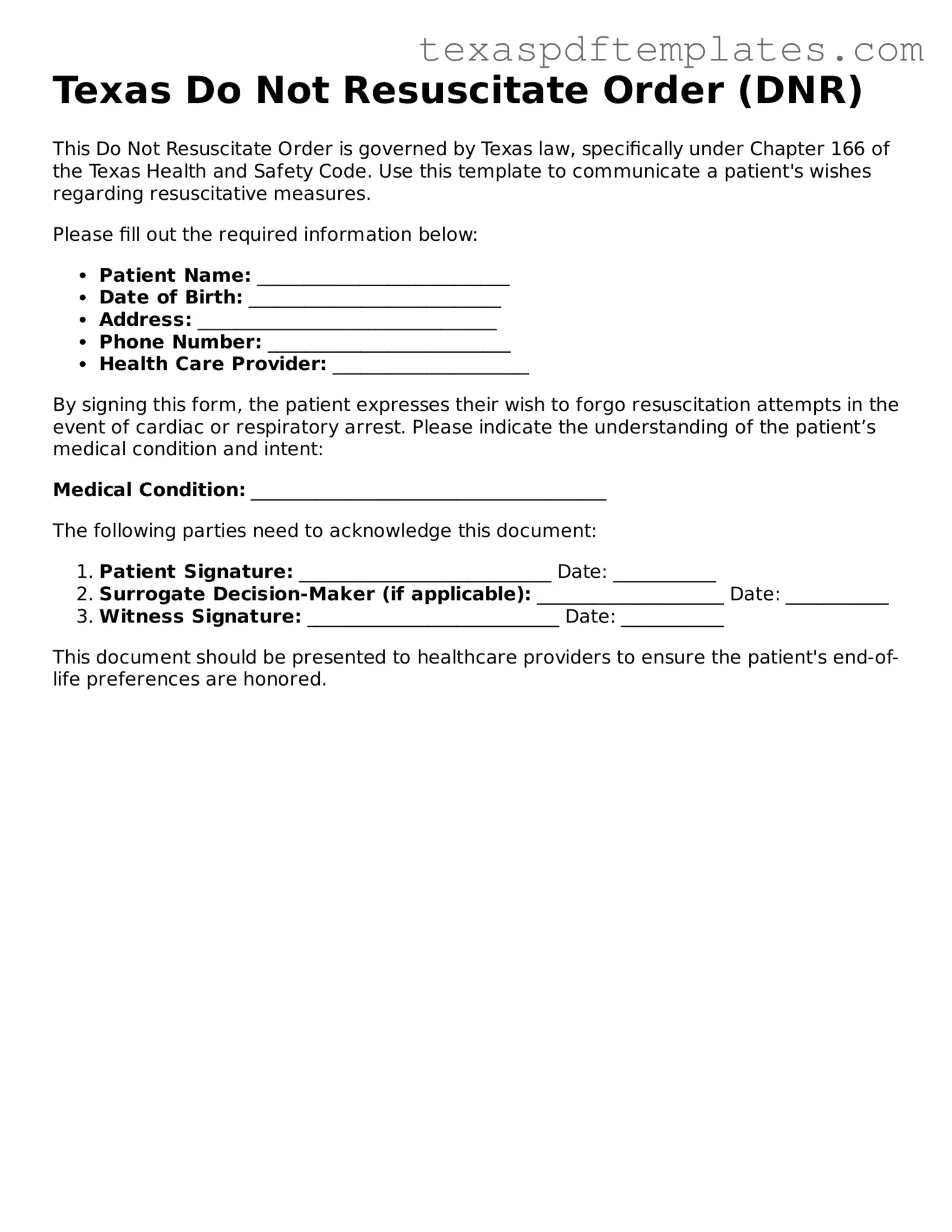Attorney-Approved Texas Do Not Resuscitate Order Template
A Texas Do Not Resuscitate Order (DNR) form is a legal document that allows individuals to express their wishes regarding resuscitation efforts in the event of a medical emergency. This form ensures that healthcare providers respect a person's decision not to receive cardiopulmonary resuscitation (CPR) or other life-saving measures. Understanding how to complete and utilize this form is essential for those who want to make informed choices about their medical care.
Open Form
